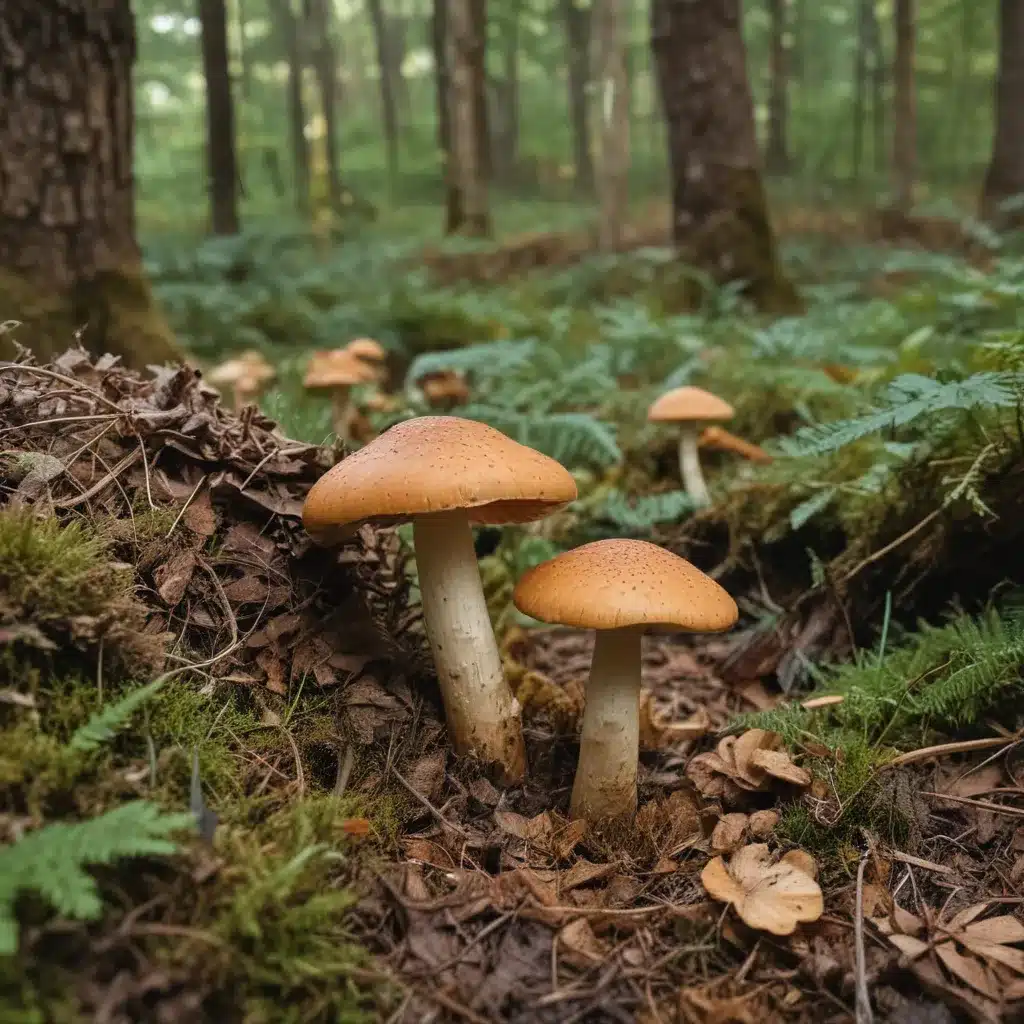
Unlocking the Secrets of the Fungal Kingdom
As a recent transplant to the Scottish Highlands, I’ve enthusiastically immersed myself in the natural wonders that surround our Loch Ness Shores campsite. From hiking the rolling hills to exploring the lush forests, there’s never a dull moment. But the new hobby I’ve fallen hardest for? Mushroom foraging.
The Scottish Highlands enjoy vibrant spring and fall seasons, when I can – with a little effort and some clues from more experienced friends – find beautiful specimens of morel, porcini, chanterelle, and even the elusive matsutake mushrooms. And let me tell you, there’s nothing quite like the thrill of the hunt, the satisfaction of a bountiful harvest, and the sheer delight of cooking up these delicious finds.
Mushroom foraging isn’t just about the food, though. It’s a hobby that keeps my mind and body active, allows me to immerse myself in the great outdoors, and continually teaches me new things about the natural world. It’s such a rewarding and relaxing pursuit that I know several people who are allergic to mushrooms but still forage just as much as I do. And let’s not forget, it’s also a naturally socially distant activity – perfect for our current times.
Mastering the Art of Identification
Of course, as with any foraging endeavor, there’s a fair bit of knowledge and caution required. The biggest fear people have when they start hunting mushrooms is the risk of accidentally poisoning themselves by sampling the wrong species. And that anxiety is well-founded. As the old saying goes, “You can eat any mushroom… once.”
But fear not, my fellow foragers! With the right guidance and resources, you can become a pro at identifying the choice edible mushrooms. The key is to get familiar with the characteristics of the specific mushrooms you’re looking for – their habitats, growing seasons, appearances, and even their smells.
Take the morel, for example. With its distinctive brain-like texture, it’s hard to mistake for anything else. And the matsutake? Its cinnamon-and-gym-socks aroma is a dead giveaway. Courses like “Foraging Wild Mushrooms” can teach you these identification skills and so much more.
Harvesting with Caution and Curiosity
Of course, even if you’re sure you’ve found a “safe” mushroom, it’s always wise to take precautions. As the experts suggest, it’s a good idea to thoroughly cook and sample a small piece first, just to make sure your body doesn’t have any adverse reactions. And remember, never, ever eat wild mushrooms raw – even the edible ones.
But with the right approach, the rewards of mushroom foraging are plentiful. These delectable finds can elevate any dish, from pasta to soups to simple sautés. And the thrill of the hunt is unbeatable. As I’ve learned from my more experienced foraging friends, the true joy lies in the journey, not just the destination.
Connecting with Nature, One Mushroom at a Time
Foraging for wild mushrooms has been a transformative experience for me. It’s not just about the food – it’s about the connection to the natural world, the sense of wonder and discovery, and the opportunity to learn something new with every expedition.
And the best part? You don’t need much to get started. As the experts suggest, a good field guide, a basket or mesh bag, and a healthy dose of curiosity are really all you need. Oh, and maybe a seasoned foraging buddy to show you the ropes.
So why not join me in unlocking the secrets of the fungal kingdom? Head on over to Loch Ness Shores and let’s embark on a mushroom-hunting adventure together. Who knows what delicious and fascinating discoveries await?

